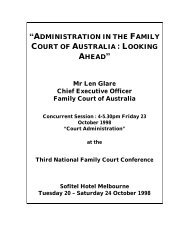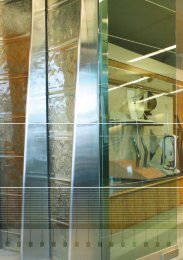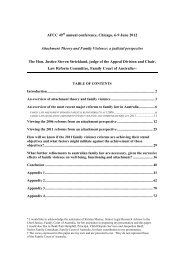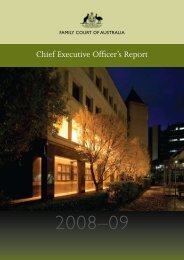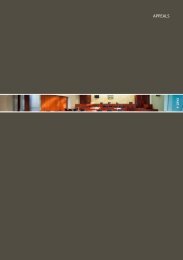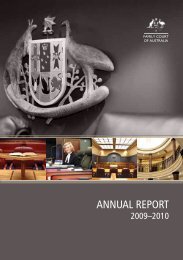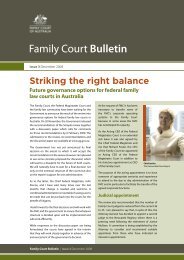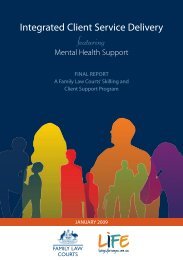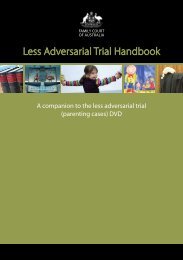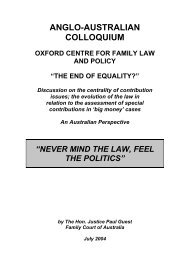Open PDF - Self represented Litigants a challenge - Size 786 KB
Open PDF - Self represented Litigants a challenge - Size 786 KB
Open PDF - Self represented Litigants a challenge - Size 786 KB
You also want an ePaper? Increase the reach of your titles
YUMPU automatically turns print PDFs into web optimized ePapers that Google loves.
<strong>Self</strong>-<strong>represented</strong> <strong>Litigants</strong> ~ A Challenge: PROJECT REPORT<br />
(e)<br />
(f)<br />
The court officer should then determine which of those witnesses are<br />
sufficiently relevant to be called as witnesses in the case. However,<br />
either party should have the right, if he or she is dissatisfied with a<br />
decision of that officer not to call a witness, to raise the matter with the<br />
judge, who should then determine whether or not that witness is<br />
called. Similarly, the court officer should decide what evidence each<br />
party can give but if either is dissatisfied with that decision and wishes<br />
to raise other matters he or she should raise that question with the<br />
judge.<br />
At the hearing it is envisaged that all witnesses are called by the judge<br />
with either party having a limited right, after completion of the judge's<br />
examination of the witness, to ask further questions. The judge should,<br />
of course have the power to determine whether those questions are<br />
relevant.<br />
25 It is a key feature of the proposal in that it helps the parties to identify the<br />
issues in dispute as soon as possible. This may happen at the court or prior<br />
to coming to it (in an integrated family law system).<br />
26 The benefits in the objectivisation of the evidence which this delivers are<br />
readily apparent. The dependence on the quality of the person appointed<br />
by the Court is equally obvious. The present system is dependent on the<br />
quality of lawyers for the parties or in the case of SRLs, the skills of the<br />
parties themselves. The change would not remove all possibility of bias. It<br />
should however remove the adversarial bias. Good inputs produce good<br />
outcomes. It would not be crucial to this model that the person should<br />
actually be employed by the Court, although the funding of that person<br />
would seemingly have to come from an independent and impartial source<br />
such as the Court’s budget or the Legal Aid budget, or one established for<br />
the purposes of the administration of justice. There are political<br />
implications for each of those choices.<br />
The scope of the proposal<br />
27 It is intended that the proposal operate in cases in which one or both parties<br />
are self-<strong>represented</strong>. A pilot program of a fixed number of cases, chosen<br />
on a random basis over a set period during which a similar random number<br />
of cases are run in the ordinary way as a control group, with comparative<br />
costing at the end.<br />
This would aim to determine the feasibility, viability and productivity of the<br />
proposed model. 1<br />
1 The productivity should be measured not only in raw data terms but also whole of process economic terms.<br />
61



